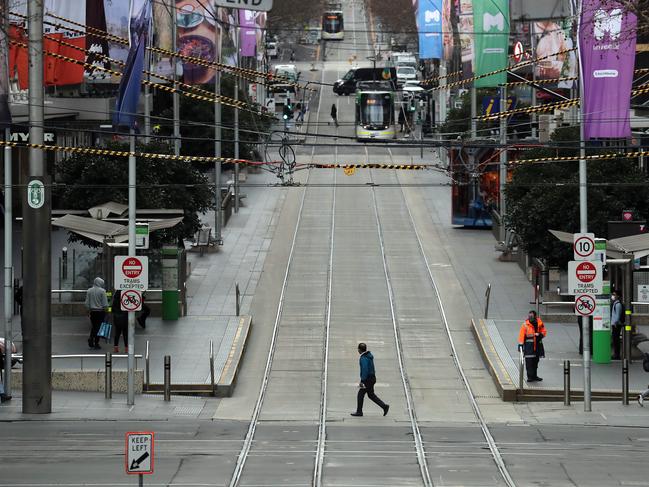Strict lockdowns unlikely to be more effective than partial ones, says OECD
How far do lockdowns have to go to be effective at combating COVID-19? New analysis indicates partial closures can do just as much as strict shutdowns.

News
Don't miss out on the headlines from News. Followed categories will be added to My News.
Highly restrictive lockdowns do not appear to be any more effective at containing COVID-19 than partial ones, an analysis by the Organisation for Economic Co-operation and Development has found.
A review by the leading international economic body of lockdown measures rolled out across the globe has found looser, partial lockdowns are likely to have the same impact on reducing the COVID-19 reproduction rate as strict ones.
As an example, it found opting to only shut some businesses achieved the same drop in the effective reproduction number, or R number, of the virus as locking down all businesses bar essential services such as supermarkets and pharmacies.
The review, which used data from Oxford University, ranked eight lockdown measures on a scale of between one to three or one to four, with one being the least stringent option and four being the harshest.

It found five containment measures – workplace and school closures, restrictions on gatherings, stay-at-home orders and international travel controls – had a “significant” effect on reducing the R number of COVID-19.
But it also found governments could achieve the full reduction possible in the R number without resorting to the most strict lockdown option across the various measures.
“A feature of these results with potentially important policy implications is that the full R reduction is often achieved well before the maximum level of (lockdown) stringency is reached,” the OECD report said.

“A stringency score of 2 on the workplace closure variable (“for some sectors”) reduces R, but it is not possible to detect any additional effect on R from a further increase in the degree of stringency.”
The workplace lockdown measure was ranked in three levels, with one being when governments recommend but do not compel closures, two being when “some” workplaces or sectors are required to close and three being when all but non-essential businesses are closed.
The review, which is contained in the OECD’s latest economic outlook report, looked at data from March to August.
The OECD noted governments across the globe are “walking the tightrope” of trying to avoid the worst economic impacts of lockdowns while also containing the virus.



